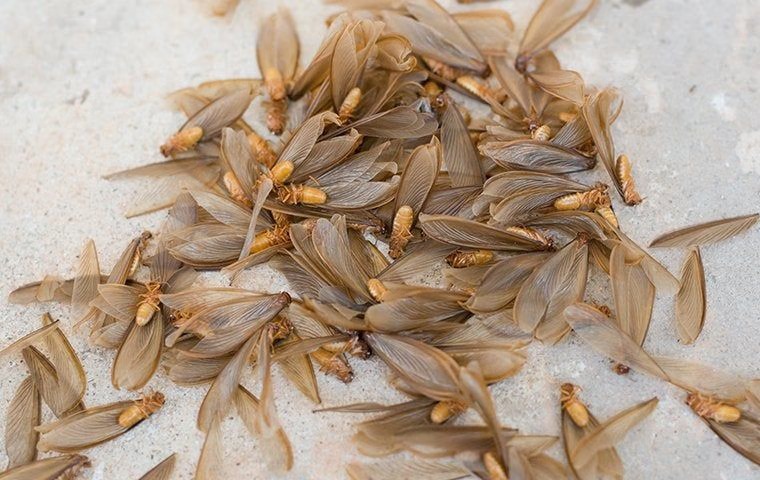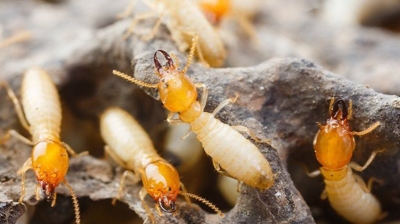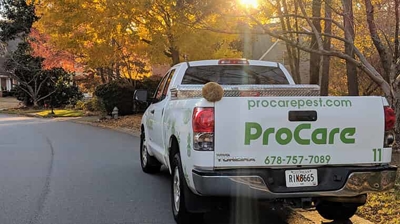
How To Get Rid Of Factors That Attract Termites To Your Marietta Home
If you don't have proactive termite control installed around your home, it is critical that you perform routine termite inspections and look for active termites. An annual inspection can alert you to signs of termites in your yard, but the warning signs aren't obvious. You can have millions of termites under your feet and not know it. So, along with inspections, we recommend taking steps to reduce the factors that attract termites. Today, we're going to drill into these two topics to help you ensure that you have some protection against termite damage. Of course, the best protection is professional termite pest control in Marietta. You can navigate to our contact page at any time to schedule service. Our service team will guide you toward the right solution for your needs and budget. With that said, let's look at what you can do on your own.
Signs Of Termite Activity To Watch For Around Your Home

The termites in Marietta that are the greatest threat to property are subterranean termites. These termites live in the ground and hide inside wood, and their warning signs are often subtle. Let's start with the warning signs you'll have to dig for (quite literally), and work our way toward the warning signs that are obvious.
Workers: A worker termite is pale and measures ? of an inch long. Workers have a strong aversion to light and avoid coming out into the air because it dehydrates them. In most cases, you'll never see worker termites. But here are a few ways you can expose them:
- Examine dead branches as you pick them up. If you see tiny, pale-colored insects that look like fat ants or maggots with legs, you've found termites.
- Examine the ground when you move stacked wood and objects made of wood. You may see termite workers. But you won't see them for long. They will disappear from view quickly.
- Cut into stumps or dying trees to expose worker termites.
Worker termites are secretive. It isn't easy to uncover them, but knowing that they are incredibly small and that they look like fat ants helps you identify them when you see them.
Damage: Most of the damage subterranean termites do is on the inside of wood. You'll have a hard time finding damage. But it isn't impossible. Here are places to look and what to look for in these places.
- Inspect the base of wooden posts on your deck. If you see trenches in the wood that feel gritty to the touch, you've found termite damage.
- Inspect fence posts. You may see damage near the ground or below the surface, depending on dampness.
- Tap on wooden support beams. If a beam sounds hollow, there could be termite tunnels inside.
- Look between your landscaping and exterior walls where vegetation touches. In this humid location, termite workers may do damage out in the open.
Wings: When a termite nest matures, winged termites are created. These insects gather into a swarm and mate. Swarms last less than an hour, so you may only see their shed wings as a sign that a swarm occurred. Look for wings:
- On the ground
- On your back deck
- On window sills
- Around door frames
- In spider webs
Tubes: Subterranean termites create above-ground tunnels called shelter tubes. These tubes are made of soil and termite saliva. Worker termites often create these tubes in the darkness underneath exterior structures because they avoid even moonlight.
- Look on your foundation wall underneath your deck.
- Get into your crawl space and check walls and piers.
- Look underneath your exterior stairs.
- Inspect interior closets and bathrooms.
Swarmers: These are white winged termites. Their bodies are black or orange, depending on the species. When you see a group of swarmers together, you won't have any trouble detecting them. While each swarmer is only ? of an inch long, their white wings are noticeable when these insects group together to mate. You may see them in many places.
- They might appear on indoor window panes because they are attracted to the light.
- They might appear on your exterior walls because they get onto surfaces as they mate.
- You might find a group of swarmers under mulch or when you expose ground cover over a termite nest. Swarmers are reproductives. They do their reproductive duties for the nest before they leave and gather together to mate outside the nest.
The most noticeable of all signs is the appearance of swarmers, but due to the limited timeframe in which swarms occur, it is difficult to detect this sign. Worse still, some Marietta residents find these winged insects inside and suck them up with their vacuum, not realizing that indoor swarmers are a warning sign of a severe infestation. We hope you don't do that. Keep watch for all of the signs listed above so that termites don't take you by surprise. These insects don't damage your home in a day, week, or month. They don't even damage your home in a year. It takes several years of infestation for serious damage to occur. If you catch termites early, you can arrest the damage.

Why Choose Procare Pest Services?
-
Locally Owned & Operated
-
Timely Services Available
-
Free Inspections for Your Home or Business
-
Modern & Effective Pest and Wildlife Control Methods
Factors That Attract Termites And How To Remove Them
Termites encroach. There is no way to prevent that encroachment. But there are factors that inspire termites to establish colonies, satellite colonies, and increase population growth. Here are our best suggestions for deterring termite activity and stunting the growth of termite colonies.
- Clean gutter clogs and make repairs to damaged gutters, splash blocks, or downspouts. Termite workers prefer moist soil, and poorly maintained gutters can inspire termite activity. On top of this, the water that runs down the side of your home can lead to wood rot, which is another attractant for termites.
- Maintain termite-resistant landscaping. Refrain from using untreated wood chips or mulch. Trim branches away from your exterior and remove vegetation to keep your landscaping dry.
- Put dead branches into a storage bin, or remove them. Dead branches are a highly sought after food source for termites. A pile of dead branches in your backyard is a buffet for termites.
- Remove any wood sources that sit on the ground, or alter conditions so subterranean termites can't access these sources. For example, you could place a pile of campfire wood used for backyard cookouts on a rubber mat. Termites can't chew through rubber and will have to create shelter tubes over the mat to get to the wood. You're sure to see those tubes when they do this.
- Put wooden deck supports on concrete piers rather than in the ground where termites can feed on the wood. While termites don't initially get into pressure-treated wood, weather conditions can compromise the outer layer of protection when this wood remains in the ground for an extended period of time.
- Don't put stacks of cardboard or paper on the ground. These materials are like ice cream to termites.
- Never bury wood in your yard. Any wood put in the ground will break down over time and become food for termites.
- Consider replacing any wood fences or wooden flower bed borders with vinyl products. Modern vinyl products look like wood but don't attract termites.
We could give more examples but you get the point. Moisture and wood are the primary concerns. Inspect your yard for conducive conditions and alter them to resist termite activity.
-
"John was very responsive and willing to answer any questions we had"
First meeting with Procare and staff.
Marty C. -
"He also provided great customer service!"
By far the best experience I've had overall.
Monique B. -
"Great service"
Great service...we have used Procare for several years.
Liz H. -
"Very knowledgeable and was patient with all our questions"
First time customer. Scheduling was a breeze and they sent me lots of reminders.
Dave J.
Contact The Pros For Total Termite Control For Your Home
It is hard to control termites with DIY termite treatments because treatment products can fail when not applied properly. If this were not the case, we would tell you what products to apply and how to apply them. Professionals have extensive training and rely upon their field experience to install termite control products in a way that will ensure the best results. Along with installing these products, your professional will also use professional methods to inspect your property for termite activity. It pays to have a professional handle termite control so that termites don't damage your property after you've done the hard work of treating your property to stop them.
Are you in Marietta? If so, you're in our service area. Contact Procare Pest Services for guidance in deciding on a termite control solution. We offer a range of services, including taking over your current termite bond. Reach out to us today to discuss your options. We're standing by to help.
Complete the form below to request your quote.

Stay In The Know
-
 How to Tell If There’s Wildlife Activity in Your Home (and What to Do About It)Read More
How to Tell If There’s Wildlife Activity in Your Home (and What to Do About It)Read More -
 Keep Your Atlanta Home Fly-Free: How Procare Manages House Flies, Fruit Flies, and Other Nuisance FliesRead More
Keep Your Atlanta Home Fly-Free: How Procare Manages House Flies, Fruit Flies, and Other Nuisance FliesRead More -
 DIY pest control?Read More
DIY pest control?Read More -
 Procare: The Best Pest Control Solutions for Atlanta BusinessesRead More
Procare: The Best Pest Control Solutions for Atlanta BusinessesRead More -
 3 Signs You Might Have a Termite Problem in Atlanta—and How to Spot Them EarlyRead More
3 Signs You Might Have a Termite Problem in Atlanta—and How to Spot Them EarlyRead More -
 Your Year-Round Defense Against Fall Bugs and Joro Spiders in AtlantaRead More
Your Year-Round Defense Against Fall Bugs and Joro Spiders in AtlantaRead More -
 How To Solve Any Fall Pest issue in 2024Read More
How To Solve Any Fall Pest issue in 2024Read More -
 Keeping Spiders Out Of Your HomeRead More
Keeping Spiders Out Of Your HomeRead More









